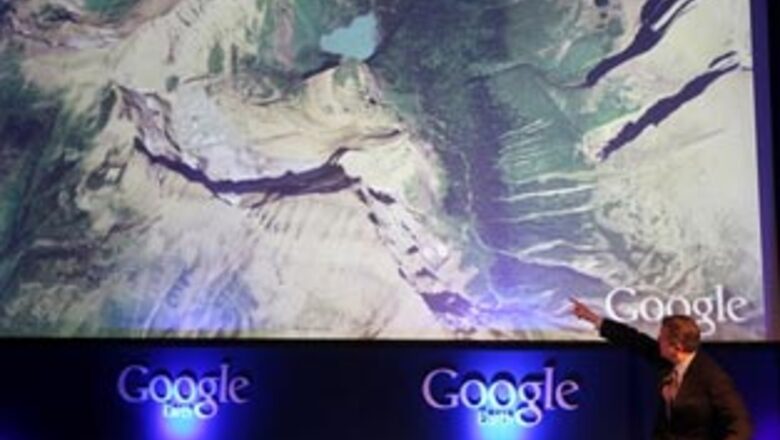
views
San Francisco: Google Inc has updated its online map of the world to add the more than two- thirds of the planet that lies underwater and provide a way to view changes to glaciers and other geography over time.
The new edition of Google Earth, unveiled in San Francisco on Monday with an appearance by former US vice-president Al Gore, was trumpeted as a powerful way to raise awareness about environmental issues such as global warming.
Using photographs and video of fish and other marine life from partners including the National Geographic Society, Google Ocean allows web surfers to dive under waves and glide over the sea floor.
It was touted as the latest fruit of Google's freewheeling research culture, even as questions swirl about the company's commitment to funding projects that do not contribute to the bottom line right away.
John Hanke, director of Google Earth and Maps, said Google Ocean is less focused on creating immediate revenue than helping to "build support for our perception as a leader."
The opportunities to generate revenue from Google Earth will come later, he added.
Google said last week its sales in the fourth quarter rose 18 per cent year-over-year to $5.7 billion, even as the US economic recession and slowing advertising spending stunted growth at rivals such as Yahoo Inc.
In developing Google Ocean, the company used sonar data from the US Navy, the National Oceanic and Atmospheric Association and others to create a visual representation of the topographic landscape hidden beneath the sea.
Google, headquartered in Mountain View, California, also unveiled a three-dimensional map of Mars on Monday based on satellite images, as well as panoramic photos taken from the Mars Rovers.
And a new "timeline" feature on Google Earth allows a person to view a succession of satellite images of the same location over the years, tracking changes to the environment.
Vice-President of Search Products Marissa Mayer said the new Google Earth features are a validation of the company's famous 20 per cent programme, which allows engineers to devote one-fifth of their time to pet projects that may or may not eventually become full-fledged Google products.
"We think some of the most interesting and innovative work we do comes though bottom's up initiatives," Mayer said.
Google has pulled the plug on some experimental projects in recent months, prompting questions about whether the company will continue to give its engineers the same free rein in a tough economy.
In 2008, Google spent roughly $2.8 billion on research and development, or 12.8 per cent of total revenue.
Hanke said the company may be taking a closer look at projects that occupy more than 20 per cent of a worker's time, but he noted the new Ocean feature was created by very few people and is "invaluable" to the company.
Google shares closed up 0.6 per cent at $340.57 on the Nasdaq on Monday.




















Comments
0 comment